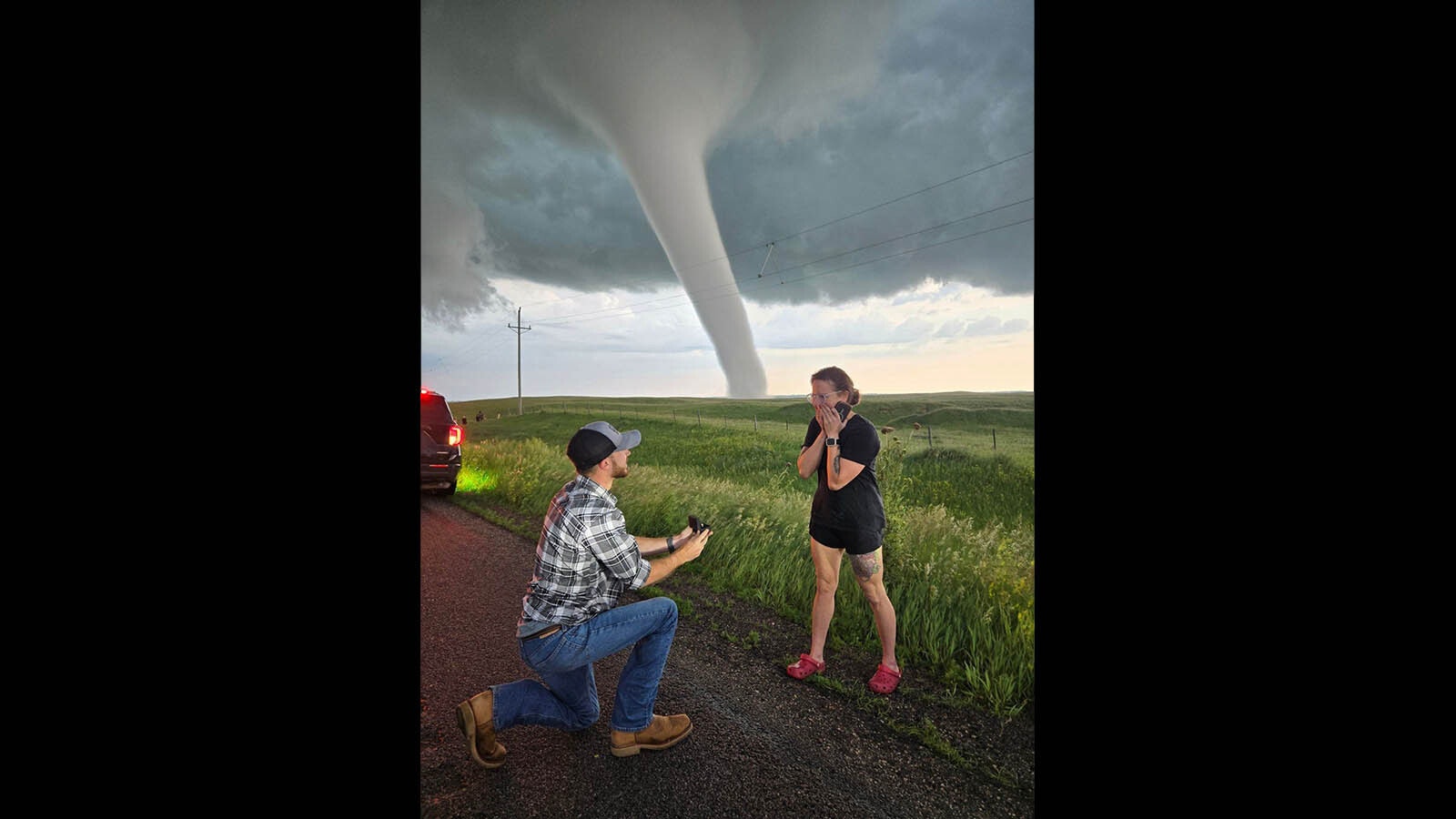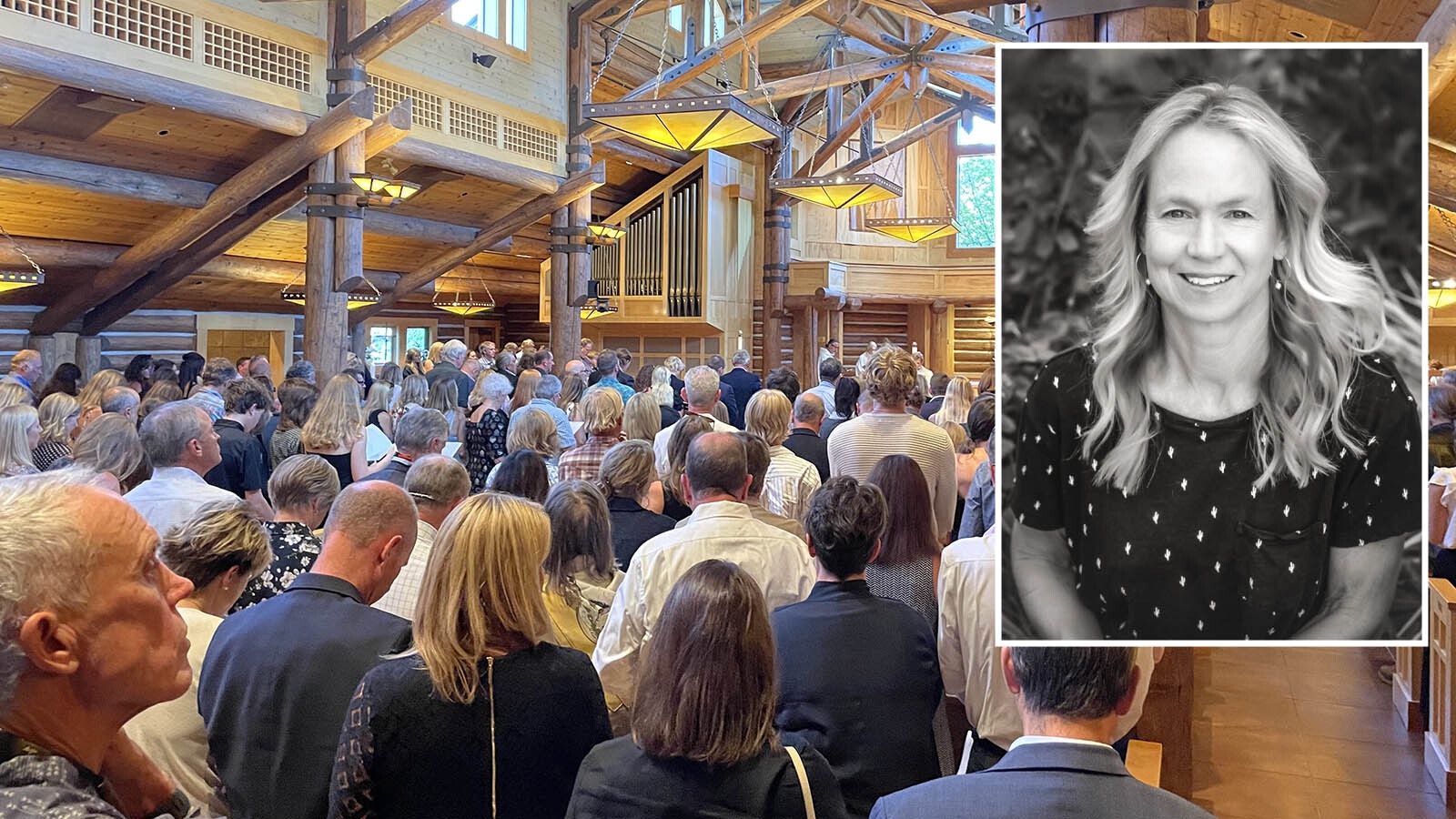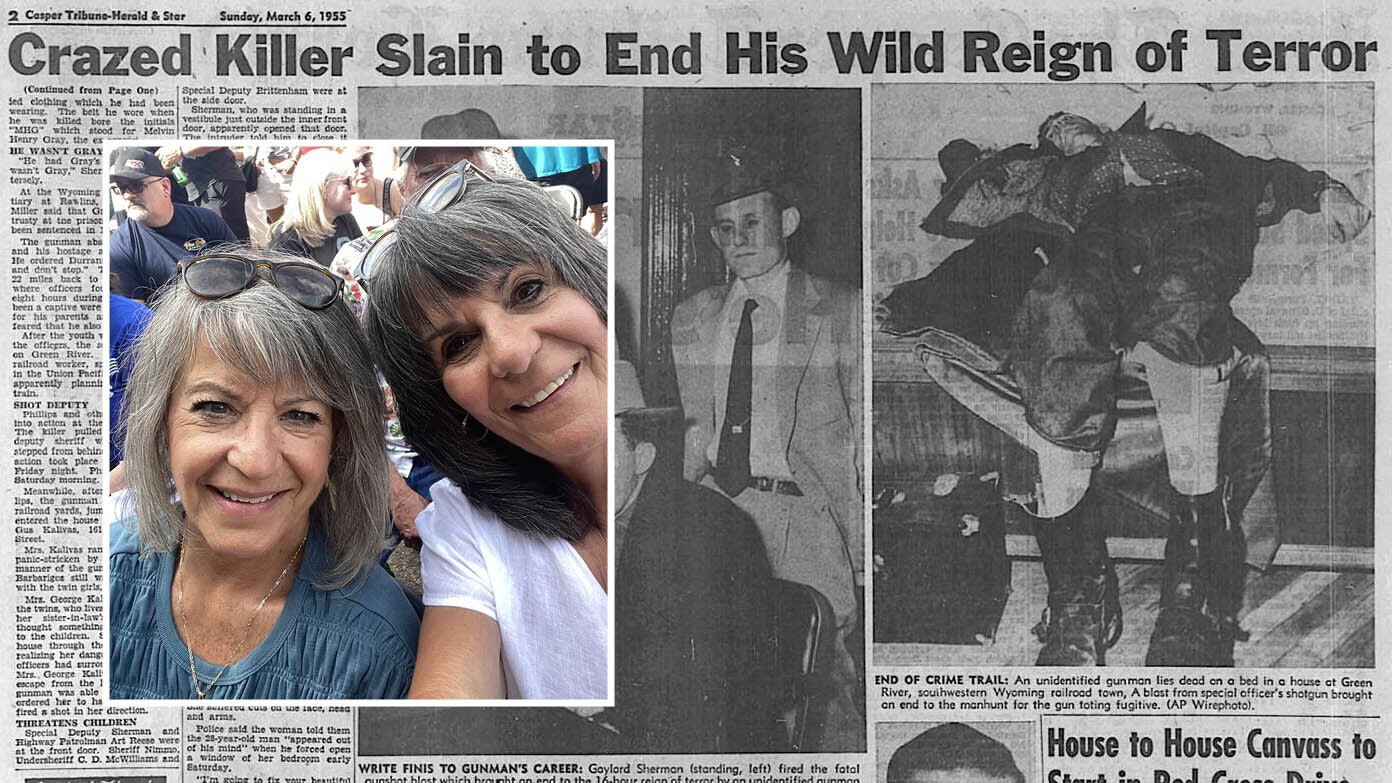The Johnson County War is one of the most brutal, vicious and pivotal chapters in Wyoming's history, when the state’s powerful cattle barons and their hired gunmen used terror and murder to drive off homesteaders.
While the legacy of the Johnson County War is everywhere around the Cowboy State, its history has slowly disappeared from the landscape.
A yearslong conflict between setters and the cattle barons came to a head in April 1892, when dozens of armed men hired by the cattlemen — who became known as “invaders” — converged on homesteaders around Johnson County, Wyoming. Their goal was to shoot, hang or otherwise murder a list of 70 troublemaking settlers.
What they didn’t expect was how determined and tough those homesteaders would be. It’s more than a bloody footnote in Wyoming history, it changed the state in ways still felt today.
That's why the Hoofprints of the Past Museum in Kaycee offers an annual tour of the places and people involved in the Johnson County War. Once a year, visitors take a bus to each of the significant spots while learning about its history from local historians.
"Our main mission at the museum is to preserve and share history," said director Laurel Foster. "A lot of the history of the Johnson County War was being lost, and the places were being forgotten. When we stop at these sites, we're sharing what many local people didn't even know about what happened here."
The Johnson County War
It's been more than 132 years since the Johnson County War, but it still evokes an emotional response from the people who live in its aftermath.
Between 1889 and 1893, Johnson County was the violent scene of skirmishes between big cattle ranchers and local homesteaders. The fight over the rights to ranch the land between Kaycee and Buffalo boiled over.
The conflict reached its climax in April 1892, when the invaders, as many residents of Johnson County still call them today, assembled to launch an organized campaign of terror across the region. They were only stopped after being besieged by armed and angry homesteaders for three days and were only saved by the intercession of the U.S. Army.
The invaders had the full support of the Wyoming Stock Growers Association and the tacit support of many other state and federal officials, including Amos Barber, the second governor of Wyoming. The cattle barons held the power, economically and politically, including owning many of the largest newspapers in the state. Homesteaders were branded as cattle rustlers, and many were lynched or slaughtered without any repercussions for their murderers.
"I think they originally intended to scare people off," Foster said. “But they ultimately planned a real murder spree. They hoped that if they killed enough people, that would intimidate the rest and they'd be done. But these were planned and organized attacks, not random acts of violence."
The KC Ranch Standoff
Once the war tour participants were aboard the museum's bus for this year’s tour, the group was driven a few blocks down to an empty lot within the city limits of Kaycee. A backyard shed marked the approximate location of the KC Ranch and a cabin where, on April 8, 1892, local rancher Nate Champion was besieged and killed.
"Champion knew something was up," said local historian and fourth-generation Kaycee resident Brock Hanson. "He'd been attacked from the cabin five months previous and had to shoot his way out."
Champion had been branded a "cattle rustler" by wealthy ranchers in Johnson County and was high on the list of people they wanted removed. He was the first target of the invaders, a group mostly comprised of Texas gunmen hired by the Wyoming Stock Growers Association and led by Frank Canton, the former sheriff of Johnson County.
Hanson dramatically recounted Champion's last stand to the tour group, detailing how he and three others barricaded themselves in a cabin while the invaders attempted to dislodge him.
"Boys, I feel pretty lonesome just now," Champion wrote in his diary while besieged in the cabin with the body of Nick Ray, a companion who had been shot dead in the doorway. "I wish there was someone here with me so we could watch all sides at once."
The invaders started building a "go-devil," a bulletproof wagon loaded with logs and dynamite, that would be wheeled up to the cabin to create an opening to reach its occupants. That's when Champion decided to make a dramatic breakout.
"I think I will make a break when night comes, if alive," reads his final diary entry. "Shooting again. It's not night yet. The house is all fired. Goodbye, boys, if I never see you again."
After several hours, Champion burst out of the cabin's back door and spirited about 50 yards before being gunned down by the invaders.
The Johnson County coroner claimed to find 28 bullets in Champion's body, along with a sign posted to his chest that read "Cattle Thieves Beware."
Champion's Martyrdom
If the goal was to kill Champion, a respected leader of the homesteader community, and break the spirit of the other settlers, it backfired. Champion became a martyr and a rallying point to dig in and fight the invaders.
The shootout at the KC Ranch also kept the invaders busy, buying enough time for homesteader Jack Flagg to reach Buffalo and warn the people of Johnson County. Champion's death rallied them to take arms and stop the invaders.
"He's probably one of the reasons there wasn't a huge body count," Foster said. "He foiled them at the cabin, holding them off for an entire day. And he was such a good shot that they didn't dare to get out from cover."
Champion has emerged as the hero of the Johnson County War. A statue of Champion, spiriting with firearms in each hand, stands in front of the Jim Gatchell Memorial Museum in Buffalo.
The legacy of Champion, a small rancher turned martyr for Wyoming homesteaders, isn't universal. Mentioning his name can invoke some of the still-simmering emotions from the Johnson County War.
"At the dedication of the Champion bronze at the Gatchell Museum, there was a descendant of (one of the invaders) there who commented, 'Why are we putting up a statue of a rustler?'" Foster said.
Place To Place
The tour continues on the all-day tour along paved highways and gravel roads in Johnson County. Those on the bus were led on the trail the invaders took as they moved north toward Buffalo to continue their campaign of terror.
The bus stopped in an empty field 6 miles from Kaycee, which was once the Western Union Beef Co. Ranch. The invaders stopped there to change horses after leaving Kaycee, another strategically placed resource provided for the success of their "expedition."
At another spot, the tour group stood on a mesa looking toward the eastern edge of the Bighorn Mountains. In the valley below, the invaders avoided a small ambush that alerted them of the growing danger they faced in Johnson County.
At each stop, Foster and Hanson chronicled the events that made these places significant in the history of the Johnson County War on public and private land throughout the county. Foster received special permission from private landowners to take the tour through their properties to tell the story.
"We call all the landowners and get permission, and everyone is very kind to us and usually allows us to do that," she said. "We always try to be respectful, not leave any trash, and shut gates, of course. It works really well for us."
Understanding The Invaders
Foster noted that the legacy of "the invaders" is also complicated. While conceding that their actions were murderous and villainous, she attempted to convey their rationale to the tour group.
"The invaders were mainly members of the Wyoming Stock Growers Association," she said. "They were the early arrivals who came to the state and had the land to themselves, and they saw the homesteaders as steadily eroding their livelihood."
The Johnson County War didn't happen in a vacuum. With the loss of ranchland, dwindling cattle herds still recovering from the Blizzard of 1886, more cowboys running cattle across Wyoming, and poor management, the old guard was upset and wanted a scapegoat for their diminished business in cattle ranching.
"They looked for something to blame, so they blamed it on the homesteaders," Foster said. "But they controlled the state Legislature and the governor. They should have been looking for legal means of addressing their problems. But there was bad blood, and they decided violence was going to be their tactic."
Several homesteaders had been killed in the years leading up to 1892, with little to no repercussion. Foster said the lack of consequences encouraged the invaders to use violence to achieve their ends.
"You could understand their frustration if you came here and built this place out of nothing, had these cattle, and were finally getting somewhere," she said. "They made this empire for themselves, and then all these people are coming in and making it impossible for you to do what you used to do. You can see the sympathies. I think it's just the solution was bad."
Under Siege
The main stop on the tour was the historic TA Ranch 15 miles south of Buffalo. Here, the invaders barricaded themselves in a barn and survived a three-day siege by a posse of armed locals with lethal intent.
The tour group received a much more hospitable welcome at the TA Ranch. A catered lunch was waiting while Foster, Hanson and TA Ranch owner Barbara Madsen shared the story of the climax of the Johnson County War.
"Someone came from Buffalo to meet (the invaders)," Foster said. "They told them, 'You need to go hold up. Everybody in town is up. They're giving away weapons at the store for people to get armed up and come down here.' So that's when they fortified at TA Ranch.”
Rather than risk their lives on the murderous campaign, the invaders rode to the TA Ranch on the morning of April 11 and barricaded themselves in the barn. They were quickly surrounded by over 200 Johnson County residents, including several Civil War veterans who knew how to make and take fortifications.
The siege of the TA Ranch's barn lasted for three days. The invaders made slots for their rifles in the barn's thick logs while Johnson County Sheriff William "Red" Angus commanded and restrained his besieging posse.
"Angus was a good leader, able to coordinate and keep (the siege) from devolving into violence," Foster said. "People have speculated on what would've happened if they killed every (invader) when they ran out of the building. I don't know, but I don't think Sheriff Angus would have let that happen. He would've wanted to take them into custody."
Still Standing
Unlike every other stop on the Johnson County War tour, the TA Ranch still looks much like it did during the three-day siege in April 1892. The besieged barn and the original ranch house still stand, with bullet holes testifying to the Johnson County War’s authenticity.
The only casualty of the barn siege was Billy Irvine's toe. According to Madsen, Irvine was sitting in the ranch house when a bullet shot through the wall hit his foot.
"He was one of the major cattle barons in the area," she said. "He came back to the ranch when it was owned by Gammon family, and he told Mr. Gammon, 'I was sitting in that building with my foot up against that door, and somebody shot my toe off.'"
The story could be apocryphal, but Madsen's daughter Kirsten decided to investigate it. Sure enough, Madsen said she found a photo taken after the Johnson County War of Billy Irvine standing with a cane. And there's a bullet hole in the wall where Irvine said he was sitting.
"That, to my knowledge, is the only wound that was inflicted in three days," she said.
Insurrection Intervention
The Johnson County War ended with the intervention of the U.S. Army on April 13. President Benjamin Harrison ordered the 6th Calvary from Fort McKinney to get to the TA Ranch and take the invaders into custody.
"Wyoming Sens. Joseph Carey and Francis Warren went to the White House to wake him up," Foster said. "The invaders reached out to Governor Barber, who reached out to the president. They all knew what was going on before but didn't act until the siege started and the invaders were in trouble."
The Sixth Calvary "captured" 45 men with 45 rifles, 41 revolvers and 5,000 rounds of ammunition. They also took possession of the invaders' dynamite, which had been captured by the posse for their own "go-devil" they were building to destroy the barn and dislodge the invaders.
The U.S. Army's intervention prevented Sheriff Angus from taking the invaders into custody. Hanson scorned the U.S. military for "saving the bad guys" that day.
Four people were killed between April 5-13, 1892. But the total death count from the Johnson County War, from when the violence started in 1889 to its "end" in 1893, ranges from 20 to 40 people.
The homesteaders "won" the Johnson County Warn, but the invaders were too well-connected to face any meaningful repercussions for their actions. They were briefly held in Cheyenne before being released, while their powerful allies ensured any media coverage was sympathetic to them.
Foster said Johnson County "went broke" trying to prosecute the invaders. Numerous legal delays used up all the county's funding, and the invaders returned to their regular lives without any fear of punishment.
History's Still There
Several other stops were made on the Johnson County War tour. Foster and Hanson shared the stories of many other heroes and villains who contributed to the violent events of April 1892 and the years preceding them.
Foster and Hanson want to uncover more artifacts and testimonies of the Johnson County War. They hope to conduct archaeological investigations at some of the places highlighted on the tour, and initial excavations yielded exciting discoveries.
"We did some metal detecting and dug a test hole at the KC Ranch cabin about 20 years ago," Hanson said. "We found cottonwood ashes, bullets, empty cartridges, and a stack of tin plates. And I think there's spurs and rifles still sealed in there."
Foster said any future archaeological excavations will be at the discretion of the landowners.
"It depends on the landowner," she said. "It would be really wonderful to do some kind of professional archeological excavation at the KC Cabin, but not everyone wants their garden and yard dug up."
Many objects of historical significance still reside as generational heirlooms in Kaycee families linked to the Johnson County War. Other objects, like Champion's diary, have vanished and haven't been seen in decades.
In the meantime, historians like Hanson's living memory ensure that the names and places that haven't been marked with placards or monuments will not be forgotten. Foster has found it to be an effective way to communicate the importance of the Johnson County War.
"It's interesting to see the actual sites, and I think some markers are in order," she said. "It's an important part of our history, and we should share it."
Was And Could Have Been
The Johnson County War has gained some notoriety outside of Wyoming. The drama of Wyoming homesteaders standing against the violent acts of gunmen hired by wealthy cattlemen inspired the plot of the 1949 novel “Shane,” which inspired what’s considered one of the greatest Western films ever in 1953.
The dramatic events of April 1892 also inspired the plot for the 1980 movie “Heaven's Gate.” Christopher Walken portrayed an antagonistic Nate Champion alongside Kris Kristofferson, Sam Waterson and Jeff Bridges.
In Wyoming, some of the invaders settled in Johnson County after being tacitly exonerated for their actions. It took generations for the enmity between them and the homesteaders to dissipate.
"My mother's generation only somewhat talked about it later in life," Hanson said. "What really made peace between the two sides is when the kids started intermarrying and the grandchildren showed up. That put some bad blood to rest."
Foster believes the impacts of the Johnson County War are not thoroughly understood 132 years later. Several plans developed for the region's economic growth in the 1880s disappeared after the events of 1892.
"Johnson County was an up-and-coming county at the time, and it lagged after the Johnson County War," she said. "The railroad was supposed to come through Buffalo, and it didn't because of this, and Johnson County became a haven for outlaws afterward. I think it had lasting repercussions."
While she's never seen a thorough analysis of the conflict's aftermath, Foster is convinced that it changed Johnson County's future in ways that are still evident today.
"I think it tarred and feathered Buffalo and Johnson County in the media, and fewer people moved here because of the lingering animosity," she said. "The after-effects can be seen in Kaycee, Buffalo and Johnson County today, which is why we do this tour. We're sharing and preserving that history."
Andrew Rossi can be reached at arossi@cowboystatedaily.com.

















